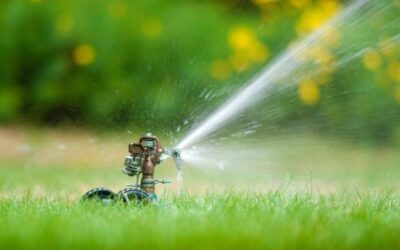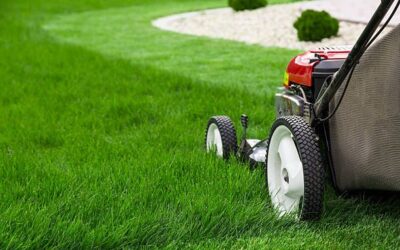Having lush, green grass in your yard is easier to accomplish than you might think. Following these 7 lawn care tips for healthier & greener grass will help your lawn to be more beautiful than you ever thought possible.
1. Mow Your Grass Properly
Mowing the grass is not as foolproof as you may think. One of the most common mowing mistakes people make is actually mowing their grass too short. Doing this can put unnecessary stress on your lawn, cause it to dull in color, thin out, and even increase the likelihood of weeds growing. Rather than mowing according to a schedule, mow according to your individual lawn’s needs. Mow frequently enough to maintain your grass without removing more than one-third of the height in one single mowing.
2. Maintain Your Mower
It is important to keep your lawnmower maintained to be sure the blades cut cleanly. Dulled blades can tear at the grass which can leave it rugged and this can lead to lawn diseases and unwanted pests. Keeping your mower blades sharpened will ensure a clean cut and help avoid these problems. It is recommended that you sharpen the blade after have used your mower for about 25 hours, or after hitting rocks.
3. Water the Right Amount at the Right Time
Watering your lawn is important, but your grass needs the right amount of water, and at the right time. Watering at night is not recommended. This can lead to excess humidity, which can cause turf disease. In contrast, watering your lawn when the sun is at its peak brightness during mid-day can cause the water to evaporate too quickly, preventing it from reaching the roots. The best time to water is in the early morning, right around sunrise. Watering at this time of day will give the roots a chance to absorb the water, then as the sun emerges it will burn off the excess water on the grass, helping to prevent disease invasion.
Your goal should be to water less frequently but long enough that your lawn and a few inches of soil get a good soaking. Frequent but shallow watering is not recommended. Pay careful attention to the weather. Both hot and windy weather conditions will cause the soil to dry out more quickly.
4. Test Your Soil
Doing a soil test will tell you your soil conditions, what nutrients your lawn is lacking, if the pH is off, and which fertilization and treatments will improve its health. Since doing a soil test will help you choose the proper fertilizer for your lawn, it is important to do this test before fertilizing or adding any soil conditioner.
5. Fertilize
Based on the results of your soil test, you will be equipped with information on the best fertilizer and soil amendments for your specific lawn. Choose a slow-release, organic fertilizer, and apply it to the outer edges of your lawn first, followed by the middle. As the added nutrients are being applied to your lawn at a time of rapid growth, you may need to mow more frequently. Regular fertilization helps provide thicker, healthier, and greener grass by providing the nutrients it needs to flourish.
6. Aerate and Overseed
Harsh conditions can limit the access of water and nutrients, causing your lawn to become compact. A solution to this is annual aeration. This technique breaks the soil up and gives breathing room to your lawn. The small holes caused by aeration are perfect for overseeding, especially in bare and thinning areas. Overseeding is sowing grass seed into existing grass. This can help fill in bare spots, thicken areas that are thin, improve density, and even enhance your lawn’s color.
7. Control Weeds
Weeds are bad news for your lawn because they are competing with your healthy grass for nutrients, sunlight, and water. The more weeds you have, the more these resources will be drawn away from your grass. When dealing with weeds, the first thing you want to do is identify the type of weed you need to eradicate. This will help you choose the right product. There are many natural herbicides that can help rid your lawn of pesky weeds. With whatever product you choose, it is important to apply it correctly and carefully. The temperature should be between 45 and 90° F with little to no wind and no rain in the forecast. Herbicides cannot differentiate between grass and weeds, so it’s crucial to only apply it to the weed. That’s why the lack of wind is crucial to help keep the products from blowing onto other plants. You can also hand pull weeds, grabbing them by the base, and pulling out the roots.
Following these 7 steps will help your yard to grow healthier, greener, and thicker grass. If you are looking for lawn care and landscaping services, contact us at Jack’s Lawn Care & Landscaping to find out how we can help your lawn look its best.



